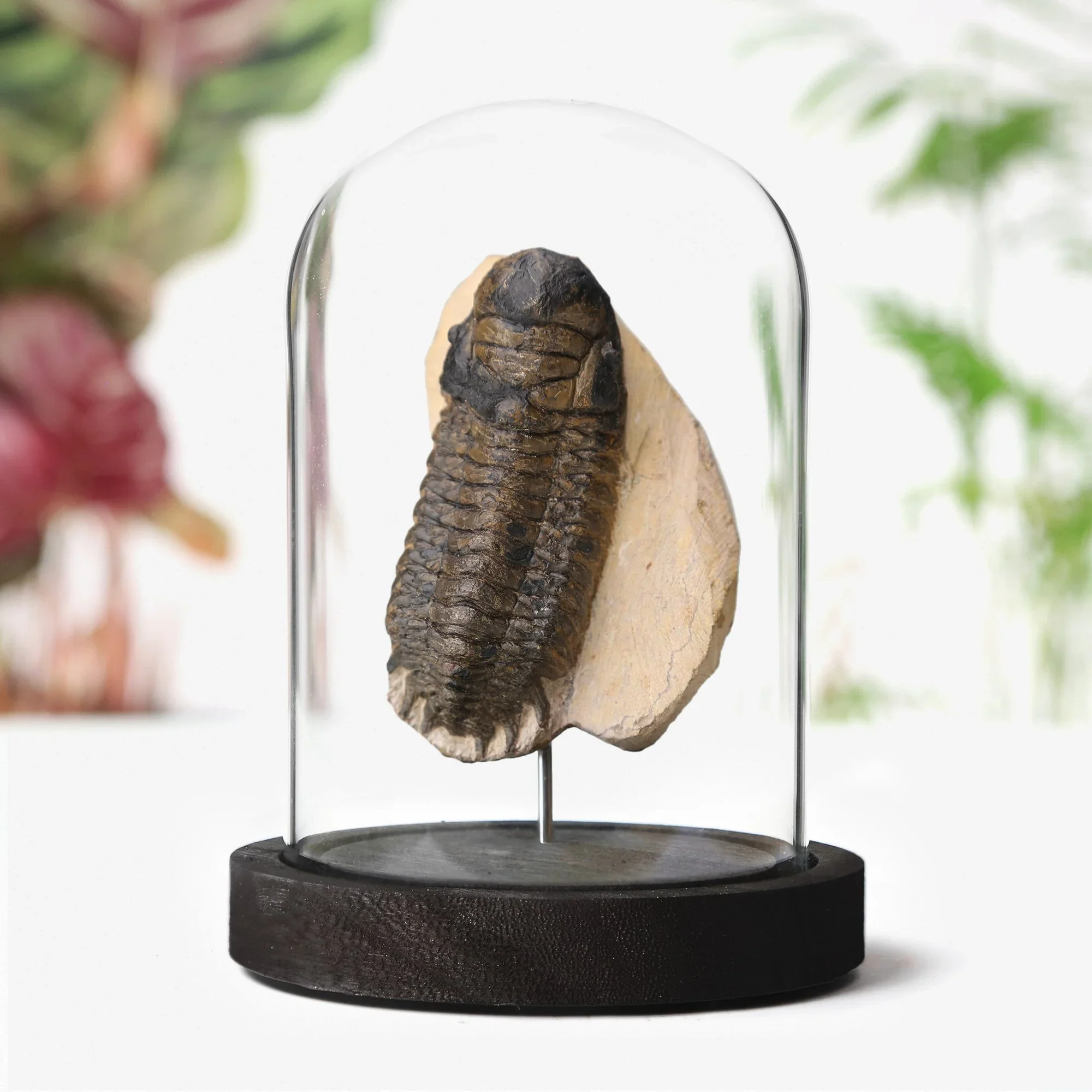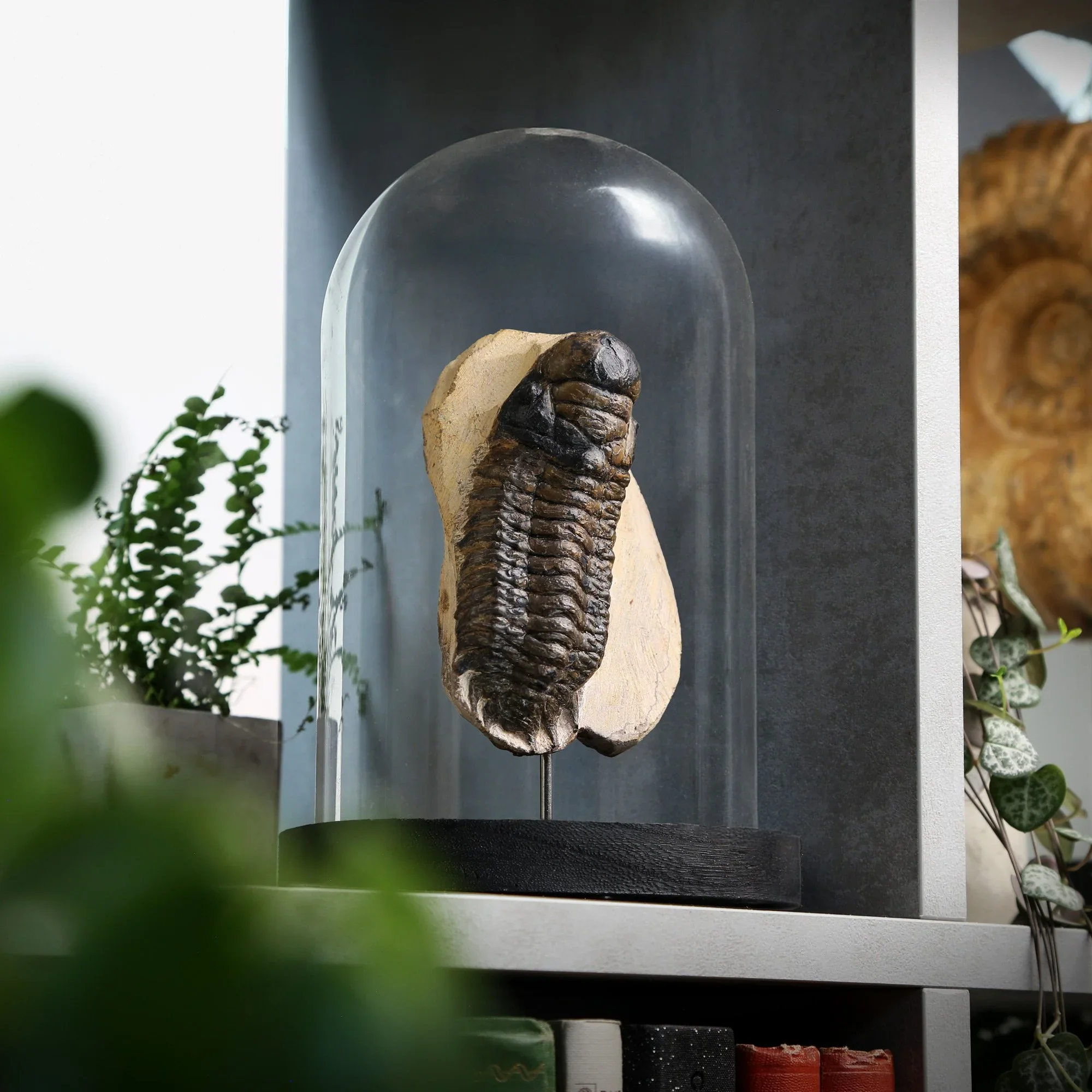 Image 1 of 5
Image 1 of 5

 Image 2 of 5
Image 2 of 5

 Image 3 of 5
Image 3 of 5

 Image 4 of 5
Image 4 of 5

 Image 5 of 5
Image 5 of 5






Cleoniceras With Sutures
This specimen is a fossilised Cleoniceras ammonite, an extinct marine mollusc that thrived during the Early Cretaceous period, approximately 110 million years ago and displayed on a bespoke wood base stand. It displays the intricate suture patterns that define this genus' complex, fern-like lines where the internal shell walls met the outer shell.
The spiral form is both mathematically precise and biologically significant, reflecting the animal’s chambered shell structure, which was used for buoyancy control in ancient tropical seas. The visible sutures, once hidden beneath the shell surface, are revealed through natural mineral replacement and careful polishing, offering a rare glimpse into the internal architecture of this long-extinct creature.
Recovered from the Mahajanga Province of Madagascar, a region known for its exceptionally preserved ammonite fossils, the specimen is displayed on a bespoke wood stand. It captures both the scientific importance and aesthetic beauty of one of nature’s most enduring and iconic designs.
Base: Solid Smooth Grain European Oak
Mount: Stainless Steel
Specimen Dimensions: 140mm h x 110mm w
Total Dimensions: 210mm h x 120mm w
This specimen is a fossilised Cleoniceras ammonite, an extinct marine mollusc that thrived during the Early Cretaceous period, approximately 110 million years ago and displayed on a bespoke wood base stand. It displays the intricate suture patterns that define this genus' complex, fern-like lines where the internal shell walls met the outer shell.
The spiral form is both mathematically precise and biologically significant, reflecting the animal’s chambered shell structure, which was used for buoyancy control in ancient tropical seas. The visible sutures, once hidden beneath the shell surface, are revealed through natural mineral replacement and careful polishing, offering a rare glimpse into the internal architecture of this long-extinct creature.
Recovered from the Mahajanga Province of Madagascar, a region known for its exceptionally preserved ammonite fossils, the specimen is displayed on a bespoke wood stand. It captures both the scientific importance and aesthetic beauty of one of nature’s most enduring and iconic designs.
Base: Solid Smooth Grain European Oak
Mount: Stainless Steel
Specimen Dimensions: 140mm h x 110mm w
Total Dimensions: 210mm h x 120mm w














